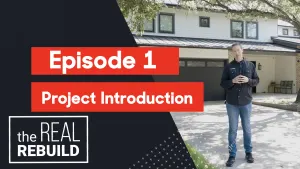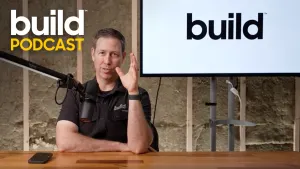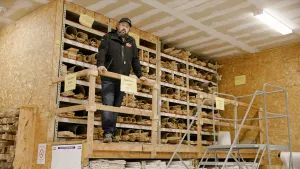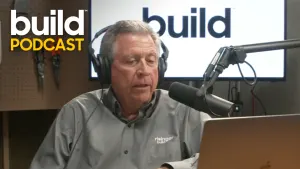Welding Types Decoded
Welding enables us to manipulate metal and create everything from robust structural systems to decorative exterior railings. Part trade, part art, the act of welding takes years to master and types of welding yield different results.
So why do we care about welding techniques? Understanding which type of welding you need for the job will help you understand the needs of your subcontractors, as well as the costs involved in the project. It doesn’t matter if you’re a contractor, builder, or a DIY home improvement enthusiast, you’ll want to understand the basics of welding for any metal work you may have on your project.
What is Welding Anyway?
Before we dive into the specifics, let’s take a step back. Welding is the act of joining two materials together (in this case metal) by melting the two parts together and allowing for fusion during the cooling process. It’s different than soldering or brazing, where the base materials aren’t melted.
A filler material typically helps to join the two pieces of metal together. So, you have your two pieces of metal, plus your filler metal (called a rod) to form a welded joint. During the process, the metal is shielded, typically by a pressurized gas, so oxygen does not infiltrate and ruin the fusion process. This all happens with an energy source, such as heat, lasers or an electric arc.
Which Type of Welding Do I Need?
In the wonderful world of welding, there are four primary welding techniques in circulation today. These are MIG, TIG, stick, and Flux Core welding. Plasma Arc Welding is also a different technique, but its primary use is in the aerospace industry, so we won’t be covering that topic here.
Each type of welding uses different machinery, technique, and is applicable to different applications. Therefore, understanding which welding technique you’ll need on your job will help you budget costs and hire the correct experts.
Stick Welding
Shielded metal arc welding (SMAW) commonly known as “stick welding” is the most basic type of welding. Simply put, the welding stick is attached to an electric current that runs between the stick and metal rod. The metal electrode rod (typically steel) is covered in a flux coating that produces carbon dioxide (CO2) gas. The CO2 shield protects the welding process from oxidation. As you weld, you must make sure your electrode rod plays nicely with the current type you’re using. For example, certain electrode rods require AC power, while others use DC power.
Think of stick welding as the muscle of the welding world. Since it is more basic than other types of welding, the welds themselves tend to be clunky and burly, meaning that this style of welding isn’t suitable for sheet metal or finish work. Instead, this welding style is well-suited for steel structures, piping, and industrial fabrication. However, it is extremely cost-effective, since the material and tools are generally far cheaper than other types of welding. But keep in mind stick welding requires a specialized technique, which can increase labor costs.
MIG Welding
Metal inert gas, or MIG welding, sometimes referred to as gas metal arc welding (GMAW), uses a wire that is attached to an electric current. It uses inert gas to protect the welding process. Different inert gas mixtures are used depending on what material is being welded, so be sure to make sure you have the proper gas mixture. Once the wire is loaded into the welding machine, it automatically spools out through the electrode holder as you weld. This allows the welder to continue welding as long as needed, instead of being limited by the length of the electrode rod in stick welding.
MIG welding is the most common type of welding since the machinery is straight forward and the techniques used are highly efficient. MIG welding is loved for its cost-effective process and ability to be used on many different types and sizes of metal.
TIG Welding
Tungsten Inert Gas Welding, or TIG welding, requires great skill and uses heat instead of electricity to fuse the metal. Unlike stick or MIG welding, you’ll use both of your hands to TIG weld. One hand feeds the electrode rod, like stick welding, while the other holds the torch.
This highly-skilled technique produces beautiful welds that are well-suited for finish work. However, this skill comes at a price, since TIG welders require more training and technique.
Flux Core Welding
Flux core arc welding or FCAW is a semi-automatic welding process that doesn’t require any gas. This is because the electrode spool is covered in a flux that produces gas and shields the weld. Just like MIG welding, you can weld continuously, making FCAW a good option where time is of the essence.
The biggest drawback to FCAW welding is that it produces a smoky, noxious gas, so be sure that the proper ventilation and safety measures are in place before starting. Flux core welding is best suited for non-finish work, such as structural elements and metal studs.
Welding Safety
It’s important to make sure you understand the safety of the equipment you’re using. If you’re a contractor on the job, always make sure you have a safety protocol in place and inform your subs about what those conditions are prior to starting any work. For all the DIY enthusiasts out there, if you’re new to welding, we highly encourage you to get educated and practice in a controlled environment before beginning your big project.
Overall, different welding techniques are best suited to different applications. The art of welding goes beyond simply joining two pieces of metal, it’s a highly-skilled trade that brings value to any metal working project.

 Share on facebook
Share on facebook Tweet
Tweet Email
Email Share on Linkedin
Share on Linkedin

















